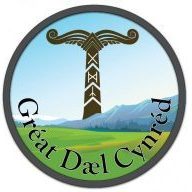Welcome to the Great Valley Kindred! We are a Heathen kindred primarily influenced by Anglo-Saxon religion. If you’re a pagan, chances are you have heard of Asatru or Norse/Scandinavian Heathenry, but you might not have heard of Anglo-Saxon Heathenry (ASH). How does ASH differ from Asatru?
There have been a number of essays over the years, and in particular Eric Wodening has a lengthy article on the subject.
However, the following is a readers’ digest version of the issue, especially tailored for guests of Great Valley Kindred (GVK):
The Deities
Some deities known to the Norse were not known to the Anglo-Saxons, and vice versa. However, these are comparatively minor deities, for the most part. The two peoples had the major deities in common, though they were known by different names:
Odin = Woden
Thor = Thunor
Freyja = Freo
Freyr = Ing Frea
Frigga = Frige
Tyr = Tiw
Heimdall = Hama
Freyja and Freyr seem much more widely worshipped in Scandinavia than their counterparts in Anglo-Saxon England. In Norse literature, Odin comes across as a war leader, betraying his chosen heroes to their deaths; in the scant Anglo-Saxon sources that have survived, Woden comes across more as a wandering magician. Nonetheless, they are the same deities seen by different cultures.
In GVK, we use the Anglo-Saxon names for the gods. Freo is important to us as our tribal goddess, even though she is not well attested in Anglo-Saxon lore.
The Holidays
Owing to variances in culture and climate, there were some differences in how and when major festivals were celebrated. This isn’t especially relevant to us. We ourselves live in a different climate and culture than either the Norse or Anglo-Saxons and we have to adapt our seasonal observances accordingly.
Organization
Anglo-Saxons had a sacral king, a chieftan in whom it was felt the collective Luck of the tribe was embodied. Iceland, however, developed the world’s oldest modern democracy in the form of a Thing, a legislative and judicial assembly and its various officers.
Many modern Anglo-Saxon Heathens practice Theodism, theod being an ancient tribe. The leader of the theod is actually seen as a sacral king embodying the Luck of the group, and members swear an oath of loyalty to him. Beneath the king, the elder members of the group are seen as nobles. Then there are typically standard members or free men. Beneath them are thralls, those who have no say in the running of the tribe until they are deemed as having paid their dues. Thralls may actually be expected to perform labor, such as serving drinks, preparing food, and cleaning the premises.
Most Asatru groups, taking their cue from Icelandic sources, do not practice sacral kingship. A religious expert called a Godhi (female: Gythia) leads the group in rituals. A larger group may elect a “chieftan” to be the secular leader of the group. Close knit groups may swear oaths of kinship between their members, but these oaths are not oaths of obedience between leaders and retainers as in Theodism. Asatru is generally far more egalitarian.
In GVK, we do not practice sacral kingship, which is something that separates us from most other Anglo-Saxon groups. We have split our leadership between a spiritual advisor (Weofodthegn), and a secular administrator (Reeve). Because of this, we have used the Asatru term kindred for our group rather than the more Anglo-Saxon theod.
Language
This may be obvious, but we will point it out nonetheless. When Asatru people want to get retro in their rituals, they’ll speak a Scandinavian tongue. When Anglo-Saxon people want to go retro, they speak Anglo-Saxon. GVK uses mostly English (a fine language descended from Anglo-Saxon), but at certain points in the ritual it will use Anglo-Saxon in the interests of atmosphere and historic rectification. GVK also uses Anglo-Saxon terms, rather than Norse terms, for its kindred offices and membership tiers.
Cosmology and Runes
In Norse mythology, the great world tree is called Yggdrasill. In Anglo-Saxon it is known as Eormensul.
In Norse cosmology there are nine worlds. In the Anglo-Saxon tradition, the Nine Herbs Charm suggests there are only seven worlds.
Norse groups tend to use The Elder Futhark, a runic alphabet with 24 symbols. Anglo-Saxons knew a different runic alphabet know as the Futhorc. It was an expansion of the Elder Futhark, and has 29 runes for which there are accompanying rune poems, and an extra 4 runes for which no rune poems are known.
Of the above differences, the most significant would be the runes, as we take an omen after every blot. However, the runwita is conversant with both the Elder and Anglo-Saxon incarnations of the runes, and is more than happy to explain the difference to guests.
Conclusion
So, there were differences in the gods, holiday, organization, languages and the runes.
But we are all Heathens. We read both Norse and Anglo-Saxon lore and archaeology (throwing in ancient Continental Germanic as well!). We’re all part of the general interest in the reconstruction of Heathenry for modern times. We in GVK have a good relation with Asatruar and Norse pagans of our relation, and we have attended their rites. If someone with some experience in Asatru simply takes the time to learn the Anglo-Saxon names of the deities, they should be able to follow one of our rituals.
